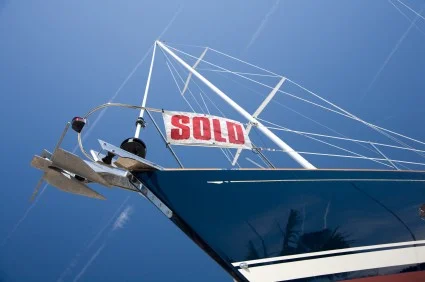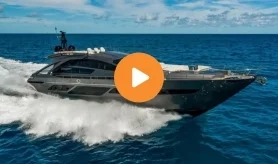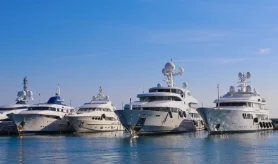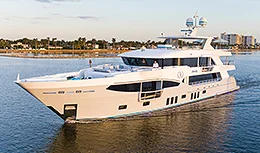- Alaskan Yachts
- Azimut Yachts
- Back Cove Yachts
- Beneteau Yachts
- Benetti Superyachts
- Bertram Yachts
- Boston Whaler
- Broward Yachts
- Buddy Davis Sportfish
- Burger Yachts
- Cabo Yachts
- Catamarans
- Carver Motoryachts
- Center Console
- Chris-Craft Yachts
- Cruisers Yachts
- DeFever Trawlers
- Dufour Sailboats
- Fairline Yachts
- Feadship Yachts
- Ferretti Yachts
- Formula Yachts
- Fountaine Pajot Cats
- Grady-White
- Grand Banks Trawlers
- Hargrave Yachts
- Hatteras Yachts
- Hinckley Picnic Boats
- Horizon Yachts
- Hydra-Sports
- Intrepid Boats
- Jarrett Bay Sportfish
- Jeanneau Yachts
- Kadey-Krogen Trawlers
- Lazzara Yachts
- Lekker Boats
- Luhrs Sportfish
- Marlow Yachts
- Maritimo Yachts
- Marquis Yachts
- Mazu Yachts
- McKinna Motoryachts
- Meridian Yachts
- Midnight Express
- MJM Yachts
- Mochi Craft
- Neptunus Motoryachts
- Nordhavn Trawlers
- Nordic Tugs
- Numarine Yachts
- Ocean Alexander Yachts
- Ocean King
- Offshore Yachts
- Outer Reef
- Oyster Sailing Yachts
- Pacific Mariner Yachts
- Palmer Johnson Yachts
Yacht Industry Update: New Boats & Late Model Brokerage Yachts
 When the recession first reared its ugly head, new boat dealers were caught sitting on way too many yachts. As a glut of repossessed vessels and boats entered the marketplace, dealers and builders slashed prices on new boats, trying to lure “bottom feeder” customers intent on buying nearly new boats for very low prices. Many boat dealers who had sold only new boats began stocking used and brokerage boats, trying to pick up revenue wherever they could.
When the recession first reared its ugly head, new boat dealers were caught sitting on way too many yachts. As a glut of repossessed vessels and boats entered the marketplace, dealers and builders slashed prices on new boats, trying to lure “bottom feeder” customers intent on buying nearly new boats for very low prices. Many boat dealers who had sold only new boats began stocking used and brokerage boats, trying to pick up revenue wherever they could.
Now, it seems, the pendulum has swung the other way. Many boat dealers say they can no longer find high-quality and fairly new used boats despite unwavering demand for them. So instead they are trying even harder to persuade buyers who come in looking for used boats to consider buying new. Boat builders are striving to keep prices down while offering all the extras, and that trend is helping dealers sway customers. Some builders are even doing significant redesigns in an effort to make older models seem obsolete.
I see it starting,” says Rob Smith, of Smith Boys Marine of upstate New York. There was so much demand for 2 or 3-year-old used bowriders and so few of them that Smith decided to find an alternative. “We equipped a specific Sea Ray to keep the price down to compete with that used boat. It worked out great.”
The new boat was still priced higher than the used option, when Smith could get the used option, and perhaps a few feet smaller, but it gave his sales teams a tool. They could ask customers why they would buy a used boat when, for about $5,000 more, they could get a new one with a warranty.
As new-boat sales plummeted in 2009, sales of used boats actually increased an estimated 8%, according to Thom Dammrich, president of the National Marine Manufacturers Association (NMMA). Total boat sales, new and used, declined about 16% between 2007 and 2010, Dammrich says.
“This is astonishing when you think about declines in new-boat sales and that other industries faced declines near 50 to 70%,” Dammrich says. Newboat sales declined 20% in 2008, more than 25% in 2009 and 13.4% in 2010, NMMA numbers show.
The average age of owned boats has increased by about five years since 1997, Brunswick CEO Dustan McCoy told investors and analysts during the company’s second-quarter earnings call. “Our internal analyses indicate an average [yacht] age of about 21 years in 2010,” McCoy says.
That is attributable, in part, to the aging of boats built in the 1970s and ’80s, when production was running around 400,000 units, and because owners have kept boats longer since the economy soured, McCoy says.
“Our analyses also indicated that boats built during the peak retail years of the late ’80s, which are now becoming 25 years old, are reaching an age when obsolescence or scrappage should start to increase, which could have a favorable impact on new boat sales,” McCoy says.
Builders also have drastically scaled back production in the past few years, says John Burnham, editorial director for YachtWorld.com. “I’ve had conversations with brokers who’ve told me there’s plenty of junk out there, meaning older boats for Sale, but the number of relatively recent models that are clean and in good shape are fewer and farther between. And that’s in great part because not that many boats were built in the last few years.”
With a shortage of used boats available, particularly late-model used, and improving economic reports, the NMMA expects to see new-boat sales increase next year, Dammrich says.
New-boat sales already have picked up, and brokerage yacht sales is also brisk at Destin, Florida-based Legendary Marine’s Gulf Coast locations, says managing partner Fred Pace. “We just haven’t traded for enough preowned boats to meet demand,” he says.
As a result, dealers will travel to purchase and sell used boats. Smith recently sold a 2007 Sea Ray 260 Sundeck Online to a customer in Delaware.
At Conrad Kreuter’s Moriches Boat & Motor in East Moriches, New York, good boats are in high demand, the Long Island dealer says. Used boats were great for him, he says, until he ran out of them. “I wish I had more good used boats, but there’s nothing out there,” Kreuter says. “One guy was going to sell me his boat, and it was beautiful — lightly used, it looked great. I went to hook it up to the trailer, and his neighbor said, ‘What are you doing with that boat? I’ll take it!’ He wrote him a check right there.”
Used boat sales have been brisk for Smith Boys Marine, too, but Smith has had to hunt for them. “The used boats that we own as a dealership have got to be down 75 or 80%,” he says.
Before the recession, 80 to 90% of new-boat buyers at Smith Boys traded in their current boats, Smith says; today, it’s between 10 and 20%. “I think a lot of people are selling to their neighbor and coming in clean, or they’re people coming Back to boating, so they’re coming in and buying new and are not trading anything in,” he says.
The Internet has helped drive this trend, he says. “The general public has figured out what boats are worth now used and they’re doing it on their own,” Smith says. So when a seller realizes he can easily get his asking price without giving the dealer a cut, he capitalizes on the opportunity, Smith says
With fewer recently built used boats for sale and strong demand, prices inevitably rise. MarineMax, the nation’s largest boat dealer, is well-positioned to give customers favorable deals on trade-ins, CEO William McGill told investors during the company’s secondquarter earnings call.
“With increases in used-boat pricing, consumers are rethinking their consideration on new boats when making their purchases and are more willing to trade in their boats,” McGill says.
“Preowned product is not necessarily a function of what book value has to say. It’s more what the market dictates,” Pace says. “Today, a nice preowned boat, whether it’s sport or fishing, in our market will bring more money than it would’ve six months ago.”
Swings in new vs. used demand are common, says Aarn Rosen, who analyzes marine sales data for Grand Rapids, Michigan-based Statistical Surveys. “It’s up to manufacturers to be creative enough and change the product enough so that a used product doesn’t fulfill a new want or desire,” he says.
That was a concept pontoon builder Bennington Marine jumped on 18 months ago, CEO Steve Vogel says. “We kind of reinvented our product because we thought we needed to give the consumer a reason to buy it as opposed to buying used or even holding on to a boat he already had,” Vogel says. “When we went about it, we did a lot of things cosmetically to make the boat look entirely different than anything we’ve had on the market before.
“I think it has worked really well for us, too, because it has made prior models look dated,” he says, pointing out that Mercedes-Benz recently restyled the CLS550 for the first time in a decade.
“We follow all the different competitive products that people could spend their money on,” Vogel says, from RVs to high-end watches.
Vogel thinks this approach is the reason Bennington has nearly doubled its market share in the last two years. He also credits the company’s new entry-level lines. “The entry level’s been really strong this year,” he says. “Customers are looking for value, so that’s kind of what we’ve focused on in the last 18 months. That doesn’t mean cheap prices. It means you get a lot for your money.” People expect to see quality features, Vogel says. “Anybody who turns on the TV, they’re going to see ads for Hyundai and all the features they’re packing into the car, so if you can get it in a car you certainly want to get them in a boat,” he says.
Like many builders, Bennington trimmed the fat and became as thrifty as possible when the economy went into a tailspin. Bennington thought it was running a “tight ship,” Vogel says, But the company, like many, realized during the recession that it could trim more. That gave Bennington the ability to add more features than it had been able to.
“In this day and age you just can’t approach [pricing] like an accountant and add up the numbers and say, ‘This is what you’re going to pay for it.’ You have to be creative and find ways to get [features] in the product, but you also have to be profitable,” Vogel says.
Ron Berman, vice president of product development and engineering for the Brunswick Boat Group, agrees. “There’s a balance between making a boat to attract customers during a recession and still giving them what they want,” Berman says.
Though tight-lipped about upcoming models, Berman does say there will be changes, and Brunswick also is attentive to prices. “The boats we’re going to introduce in the next six months are not going to compromise features,” he says.
“It’s all part of the pendulum, or seesaw effect, between new and used demand,” statistician Rosen says. “As the market stabilizes, dealers will tend toward new product because … no matter how you cut it, everyone would rather buy a risk-free new boat with a warranty than a used.” Or would they? Boats, by nature, tend to last a long time.
“I think as there are fewer good used boats available in the marketplace, people will gravitate to new boats,” Boston Whaler president Tim Schiek says. But he laughingly acknowledges that his parents owned two classic Whalers that they had completely renovated.
Burnham is even more skeptical that a dwindling number of “new” used boats will deter many from buying used. “I have to think that consumers are going to continue to be pretty conservative about spending their money,” he says. “I think people are more careful about the debt they’re carrying, just in broad strokes.”
Some who are employed might still get on the water, whether they buy slightly smaller boats or used, but they are not likely buying the boat they had their heart set on a few years back, Burnham speculates. “Boats aren’t going away. Even some boats that one yacht broker describes to me as junk, those boats are going to be around, and people are going to be enjoying them. So I think, as an industry, we are seeing an ongoing shift, where new-boat manufacturing is not as important as it was.” “Servicing the existing fleet, if you will, has become more important,”
Burnham says. “New boats will always drive the yachting industry in important ways, but I think what we’ve seen in the last five years is a shift that’s probably not going to go back.” Whatever happens, the result of this painful recession will ultimately benefit the customer, Vogel says. “I think it’s actually been a healthy thing,” he says.
“It’s been painful, but there is a real cleansing process. We’ve cut a lot of fat out of the business, become more focused on quality and, in the end, the consumer does win.”
specifications for all new yacht designs.
Source: Soundings, Reagan Haynes
Latest News & Events

|
Announcing Exclusive Global Representation of JFA YachtsDenison Yachting is excited to announce an excl… |

|
41m Westport New Build Sold by Peter Quintal [135 RPH Hull #2]Denison Yachting is delighted to announce the s… |

|
Monaco Mystique: Opulence, Romance, Royalty, and MoreNo place combines opulence, romance, royalty,… |

|
Superyacht Super Bowl: St. Barths Rings in 2025 in Record-Breaking Superyacht StyleSt. Barths has outdone itself once again, solid… |

|
157′ Trinity 2004 Sold by Kurt Bosshardt & Bret van Roden [MIRABELLA]MIRABELLA, a 157′ Trinity built in 2004,… |

|
Dream Team: Denison Yachting, Bannenberg & Rowell, and ARES Yachts Launch Project Spitfire CollaborationWhen it comes to superyacht designers, Denison… |

|
Chesapeake Retreat: A Busy Couple Build A Waterfront Paradise on Chesapeake BayI grew up in an urban Richmond, Virginia, townho… |

|
62′ Azimut 2010 Yacht For Sale in Boca Raton, Florida [ALL IN]Pre-Owned Azimut 62 Evolution Yacht For Sale Wi… |

|
107′ President 2011 Yacht For Sale in San Diego, California [WHITE LOTUS]Pre-Owned 107′ President Yacht For Sale… |

|
85′ Azimut 1999 Yacht For Sale in Fort Lauderdale, Florida [ELIZEE]Pre-Owned Azimut 85 For Sale With Denison Yacht… |

|
85′ Princess 2023 Sold by Pierre Badin [SIDURI III]SIDURI III, an 85′ Princess built in 2023… |

|
Charter Yacht Profile: MIt’s “Better in the Bahamas̶… |



